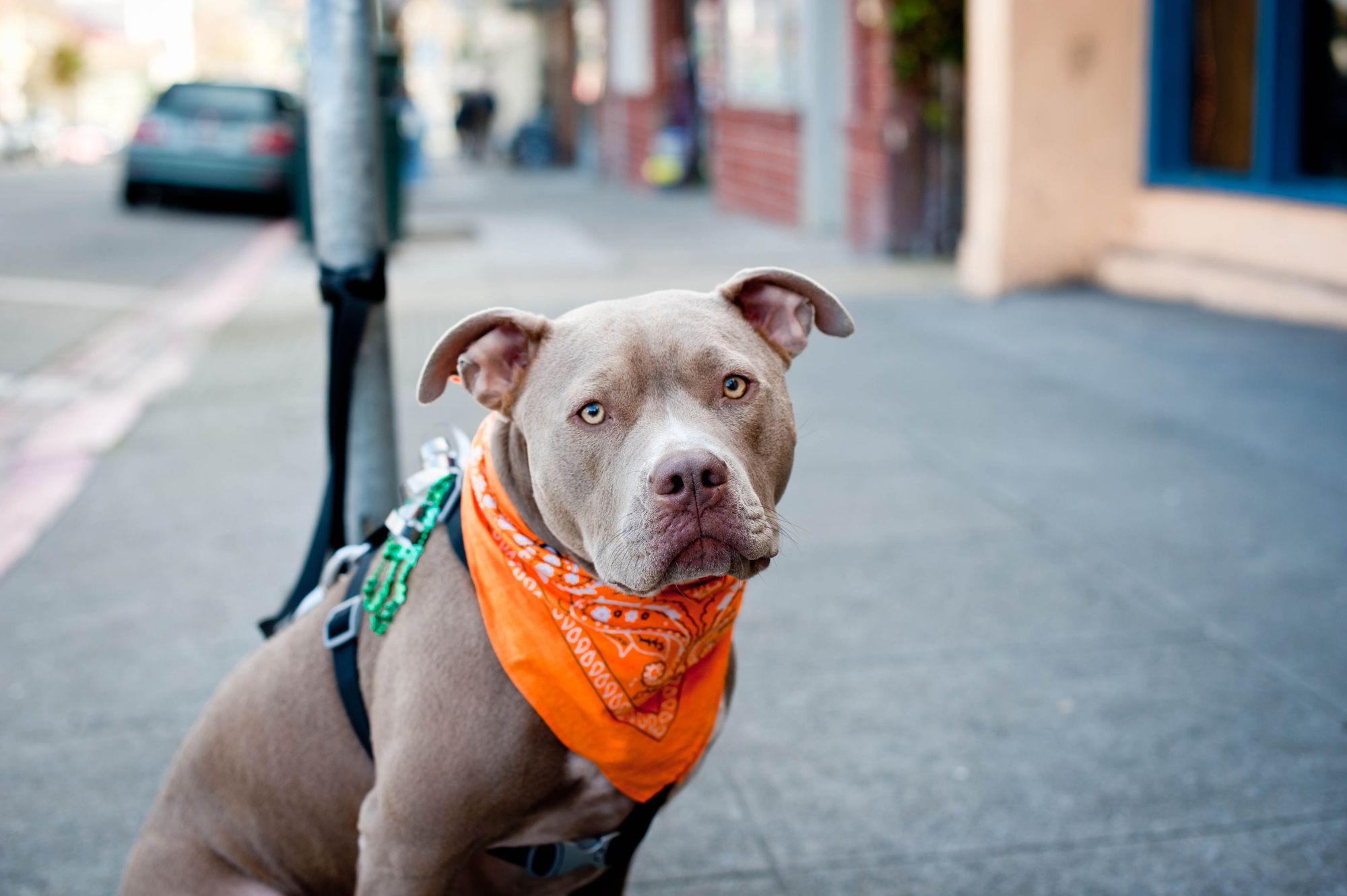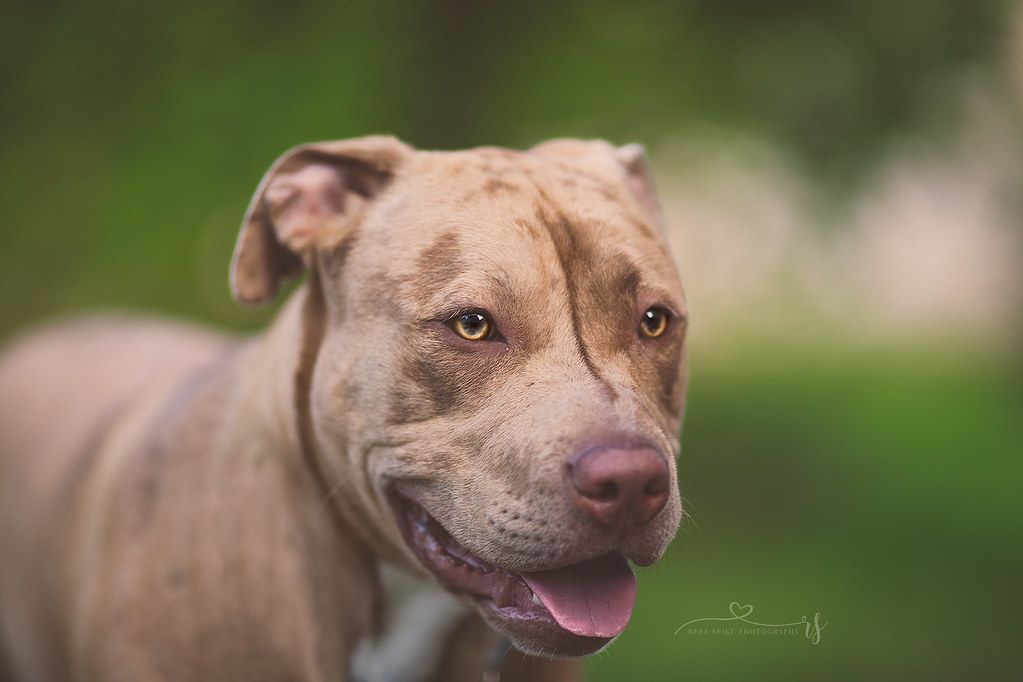Pit bulls are a popular breed of dog known for their muscular build and loyal personalities. They are also known for their high energy levels and love of playtime. However, one question that many people have when it comes to pit bulls is how many puppies they can have in a litter. The answer is that pit bulls can have anywhere from 1 to 10 puppies in a litter, with the average litter size being 5-7 puppies.
The litter size of a pit bull can vary depending on several factors, including the age and health of the dog, the size of the litter, and the timing of breeding. It is important for pit bull owners to be aware of these factors in order to properly care for their dog during pregnancy and birth. In addition, it is recommended to take the dog to a vet for an ultrasound scan around week 5 of pregnancy to determine the exact number of puppies in the litter.
While the average litter size for pit bulls is 5-7 puppies, there have been cases of pit bulls having larger litters. For example, one pit bull named Tippy delivered 16 healthy puppies in a single litter. However, it is important to note that such cases are rare and not the norm. Understanding the factors that can affect litter size can help pit bull owners properly care for their dogs during pregnancy and birth.

Understanding Pit Bull Breeding
Breeding pit bulls can be a complex process that requires careful consideration and planning. It is important to understand the factors that can affect a pit bull's breeding potential, litter size, and overall health.
One of the most important factors to consider when breeding pit bulls is the fertility level of the dogs. A healthy and fertile pit bull will have a better chance of producing a larger litter size. Age and health can also play a role in a pit bull's fertility level. For example, older dogs may have a decreased fertility level, while dogs with certain health conditions may be unable to breed altogether.
Another factor to consider when breeding pit bulls is the specific breed of the dog. Different pit bull breeds may have different litter sizes and fertility levels. For example, blue nose pit bulls may have a smaller litter size compared to other pit bull breeds.
It is also important to consider the timing of breeding when attempting to produce a larger litter size. Breeding a pit bull during the optimal time in their heat cycle can increase the chances of a larger litter size.
Overall, breeding pit bulls requires careful planning and consideration of various factors. By understanding the breeding process and the factors that can affect a pit bull's breeding potential, breeders can help ensure the health and well-being of their dogs and produce healthy litters.
Pit Bull Litter Size
Pit bulls are known to have litters ranging from one to ten puppies, with the average litter size being five to seven puppies. However, factors such as the dog's age, health, and breeding timing can affect the size of the litter. Inbreeding can also lead to larger litters, but it can also increase the risk of health problems in the puppies.
Determining the exact number of puppies before delivery can be done through ultrasound scans. The gestation period for pit bulls ranges from 62 to 64 days, and the puppies are usually born in a span of several hours.
It is essential to ensure that the mother pit bull is healthy and well-fed during pregnancy to ensure the health of the puppies. The puppies should also receive proper care and nutrition after birth to ensure their growth and development.
In rare cases, some pit bulls have been reported to have larger litters, such as Tippy, who delivered 16 healthy puppies in one litter on April 1, 2000. However, such cases are not common, and it is crucial to focus on the average litter size for pit bulls.
Overall, pit bull litter size can vary, but the average litter size is between five to seven puppies. Proper care and nutrition during pregnancy and after birth are crucial to ensure the health and well-being of the mother and her litter.
Influence of Genetics on Litter Size
The size of a Pitbull's litter is greatly influenced by genetics. The dog's genes play a significant role in determining the number of puppies produced in each litter. When comparing Pitbulls to other dog breeds, it's apparent that smaller dogs will have fewer offspring with each litter, while larger breeds produce more puppies.
Breeding practices also play a role in determining the size of a Pitbull's litter. Inbreeding can lead to smaller litter sizes, while outbreeding can result in larger litter sizes. It's important to note that breeding practices should always be done responsibly and with the health of the dogs in mind.
It's also worth noting that a Pitbull's age can affect litter size. Younger Pitbulls often have smaller litters, while older Pitbulls may have bigger litters. As a dog ages, its reproductive capabilities may also decline, resulting in smaller litter sizes.
Overall, genetics and breeding practices are the most significant factors that influence the size of a Pitbull's litter. By understanding these factors, breeders can make informed decisions that will lead to healthy litters and happy dogs.

Pit Bull Health and Litter Size
The health of a pit bull plays a crucial role in determining the size of its litter. A healthy pit bull with no underlying health issues is more likely to have a larger litter size. However, stress and poor health can lead to smaller litter sizes.
During pregnancy, pit bulls may experience morning sickness, loss of appetite, and weight gain. These symptoms are normal and are not a cause for concern unless they persist for an extended period. Pit bull owners should monitor their dog's health closely during pregnancy and provide appropriate care as needed.
It's important to note that inbreeding can also affect the size of a pit bull's litter. Inbreeding can lead to a higher risk of health issues and smaller litter sizes. Therefore, it's essential to breed pit bulls responsibly and avoid inbreeding.
Overall, maintaining a pit bull's health through proper nutrition, exercise, and regular vet check-ups can lead to a healthy pregnancy and larger litter sizes.
The Role of Nutrition in Pit Bull Breeding
Pit bulls are a breed of dog that require a balanced diet to maintain good health and energy levels, especially during the breeding process. Proper nutrition is crucial for both the mother and the puppies during pregnancy, as it can affect their growth and development.
A balanced diet for a pregnant pit bull should consist of high-quality protein, healthy fats, and a variety of vitamins and minerals. It is important to note that overfeeding a pregnant pit bull can lead to obesity and other health issues, so it is best to consult with a veterinarian to determine the appropriate amount of food to feed the mother.
In addition to a balanced diet, it is recommended to supplement the mother's diet with prenatal vitamins to ensure that she is receiving all the necessary nutrients for a healthy pregnancy. Prenatal vitamins can also help prevent certain birth defects in the puppies.
After the puppies are born, it is important to continue providing the mother with a balanced diet to support her energy levels and milk production. This can also help prevent postpartum health issues such as mastitis.
Overall, proper nutrition is essential for a successful pit bull breeding process. A balanced diet can help ensure the health and well-being of both the mother and her puppies.
Pit Bull's Age and Litter Size
The age of the Pit Bull can be a determining factor in the number of puppies it can have. Typically, Pit Bulls reach sexual maturity between 6 to 12 months of age. However, it is not recommended to breed them until they have reached 2 years of age. Breeding Pit Bulls too early can lead to health problems for both the mother and the puppies.
Moreover, age can also affect the size of the litter. Younger Pit Bulls tend to have smaller litters, while older Pit Bulls may have larger litters. This is because older Pit Bulls have more experience with breeding and may have a higher fertility rate.
It is important to note that the age of the Pit Bull is just one of many factors that can affect litter size. Other factors include the health of the Pit Bull, the size of the litter, and the reproductive health of the Pit Bull.
In conclusion, the age of the Pit Bull can have an impact on the size of its litter, but it is just one of many factors that should be considered when breeding Pit Bulls. It is important to consult with a veterinarian and ensure that the Pit Bull is healthy and ready for breeding before attempting to breed it.

Understanding the Pit Bull's Heat Cycle
Pit Bulls, like all dogs, go through a heat cycle, also known as a reproductive cycle. This cycle marks the onset of fertility, and it means that the dog is receptive to mating and will release mating hormones. The heat cycle is repeated every 6 months for the rest of the dog's life.
The first heat cycle usually comes when a dog reaches 6 months of age, with the average heat cycle lasting from 18-21 days. However, the age at which a Pit Bull has its first heat cycle can vary. It is not uncommon for a Pit Bull to have its first heat cycle as early as 4 months of age, or as late as 12 months of age.
During the heat cycle, the dog's reproductive system goes through a series of hormonal changes. The cycle is divided into four stages: proestrus, estrus, diestrus, and anestrus.
- Proestrus: This is the first stage of the heat cycle, and it lasts for around 9 days. During this stage, the dog's vulva swells, and it may discharge a bloody fluid. The dog may also show signs of restlessness, increased urination, and a decreased appetite.
- Estrus: This is the second stage of the heat cycle, and it lasts for around 9 days. During this stage, the dog's vulva continues to swell, and the bloody discharge becomes lighter in color. The dog may also become more receptive to male dogs and may try to initiate mating.
- Diestrus: This is the third stage of the heat cycle, and it lasts for around 60 days. During this stage, the dog's reproductive system returns to its normal state, and the dog is no longer receptive to mating.
- Anestrus: This is the fourth stage of the heat cycle, and it lasts for around 120 days. During this stage, the dog's reproductive system is inactive, and the dog is not receptive to mating.
It's important to note that during the heat cycle, female Pit Bulls can become pregnant if they mate with a male dog. Therefore, it's essential to keep female Pit Bulls away from male dogs during this time unless you plan to breed them.
Overall, understanding the Pit Bull's heat cycle is crucial for any Pit Bull owner. By knowing what to expect during the heat cycle, you can provide the necessary care and attention to your dog and prevent unwanted pregnancies.

Gestation Period of Pit Bulls
The gestation period for Pit Bulls ranges from 62 to 64 days. However, this timeline can be less or more by a day or more depending on the breed's size, health, and genetics. Pit Bulls have three trimesters like humans, and every trimester lasts about 21 days.
It is important to note that the gestation period can vary depending on various factors such as the dog's fertility level, age, heat cycle stage, and whether the puppies are a result of inbreeding. Therefore, it is essential to have a veterinarian monitor the pregnancy to ensure that everything is going smoothly.
During the first trimester, the embryos will start to develop and differentiate into different organs and body parts. The mother may experience morning sickness, fatigue, and a decrease in appetite during this time. It is important to feed the mother a high-quality diet to ensure that the puppies develop correctly.
In the second trimester, the puppies will start to grow rapidly, and their organs will continue to develop. The mother's belly will start to expand, and she may start to gain weight. It is essential to monitor the mother's weight gain to ensure that she is not gaining too much weight, which can lead to complications during delivery.
During the third trimester, the puppies will start to position themselves for delivery, and the mother's mammary glands will start to develop. It is important to prepare a comfortable and safe space for the mother to give birth and to have all the necessary supplies ready.
In conclusion, the gestation period for Pit Bulls is around 62 to 64 days, but it can vary depending on various factors. It is important to have a veterinarian monitor the pregnancy and to provide the mother with a high-quality diet and a safe and comfortable space to give birth.
Prenatal Care for Pit Bulls
Pit bulls, like all dogs, require proper prenatal care to ensure a healthy pregnancy and delivery. Here are some important steps to take during your pit bull's pregnancy:
1. Visit a Veterinarian
First and foremost, it is important to take your pit bull to a veterinarian for a prenatal checkup. The vet will be able to confirm the pregnancy, estimate the due date, and check for any potential health issues or complications.
2. Provide Proper Nutrition
During pregnancy, pit bulls require a balanced diet that is rich in protein, vitamins, and minerals. It is important to consult with a veterinarian or a canine nutritionist to ensure that your dog is receiving the proper nutrients. Additionally, it is important to avoid overfeeding your dog, as this can lead to obesity and other health issues.
3. Monitor Exercise
While exercise is important for a healthy pregnancy, it is important to monitor your pit bull's activity level and avoid overexertion. High-impact activities, such as jumping or running, should be avoided as they can put unnecessary stress on the growing puppies.
4. Prepare for Delivery
As the due date approaches, it

Physical Characteristics of Pit Bulls and Puppies
Pit bulls are medium to large-sized dogs that can weigh anywhere from 30 to 90 pounds and stand 17 to 19 inches tall at the shoulder. They have a muscular build with a broad chest and a short, smooth coat that can come in a variety of colors, including black, white, brown, and brindle.
Pit bull puppies are born weighing about 7 to 10 ounces and measuring 8 to 10 inches long. As they grow, they can reach a weight of 30 to 85 pounds and stand 17 to 19 inches tall at the shoulder by adulthood. Puppies have short legs and a medium-length tail that tapers to a point, which is sometimes one of the characteristics used to define the breed.
Pit bulls require regular exercise to stay healthy and happy. They have a lot of energy and need plenty of opportunities to run and play. A daily walk or jog, along with some playtime in a fenced yard or park, can help keep them fit and mentally stimulated.
In conclusion, pit bulls are medium to large-sized dogs that can weigh anywhere from 30 to 90 pounds and stand 17 to 19 inches tall at the shoulder. Pit bull puppies are born weighing about 7 to 10 ounces and measuring 8 to 10 inches long. They require regular exercise to stay healthy and happy.




